Nissan Skyline 25GT Turbo
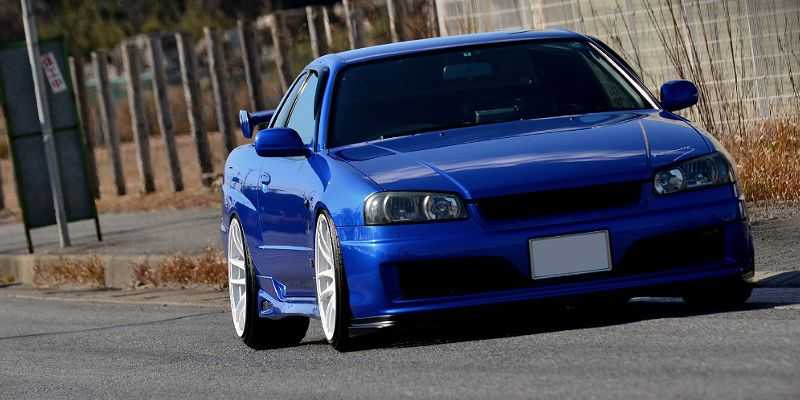
This sleek little number stars in Initial D as a dark pearl blue racing machine driven by Atsuro Kawai. The Nissan Skyline is a popular line of compact sports cars and has a pretty interesting history. It was actually originally produced by the Prince Motor Company, known as just a Skyline, before the company merged with Nissan back in 1966. From then on, it was deemed the Nissan Skyline. Other than its big time celebrity on the big screen, this bad boy also earned itself the nickname «Godzilla» after one make dominated the JTCC and won all 29 races it entered from 1989–1993. The model is currently available in Japan through the Nissan Prince Shop and comes in either coupe or sedan body styles.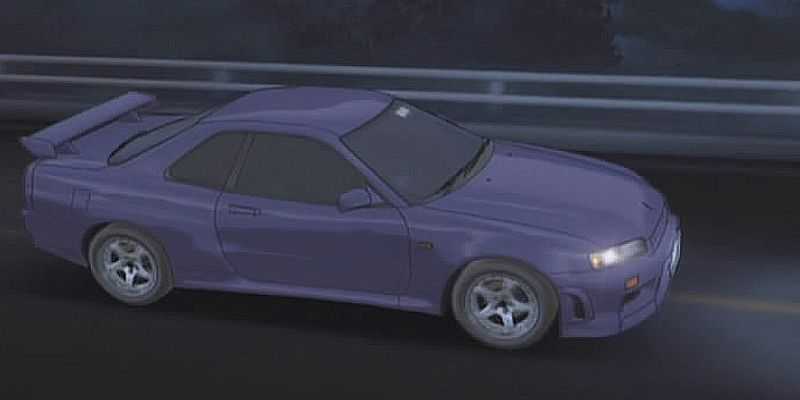
Initial D Games
SEGA showed their appreciation to the series by creating twelve video games, based on each stage.
With the original ‘Initial D Arcade Stage’ being launched in 2002, the most recent version, ‘Initial D Arcade Stage Zero Ver.2′ was launched in 2019, and there are various guides available online even to show you how to play this on your PC.

If you’re huge fans like we are, you’re going to need to head to Odaiba, Japan, to experience the most magnificent arcade on earth, with the 4th Stage having been recreated with real simulation RX7 and AE86’s, including full OEM interiors. We’re desperate to head out there and experience this!
If you’re keen to get the ultimate Initial D experience a little closer to home, then the best you’ll get is by appreciating the ultimate racing simulator, Assetto Corsa, in VR.
Their Japanese Car Pack features an awesome widebody Eight-Six for you to drift. With the endless realistic modification capabilities of the game, you’ll be able to take it drifting in some of the most stunning Japanese touge roads. It’s time to prove to your friends that you’ve got what it takes to become the next Takumi!
Initial D Stages
First Stage (1998)
The very first episodes of Initial D began in 1998, as Takumi Fujiwara becomes an instant hit in Japan.
This series is based on Chapters 1-77, (Volumes 1-7.)
Second Stage (1999-2000)
In this series, Team “Emperor” surfaces, with the ultimate quest of crushing every team in Gunma. Takumi’s 86 struggles to keep up with their AWD Evo’s.
This series is based on Chapters 78-145, (Volumes 8-13.)
Third Stage (2001)
This was a 105-minute movie with Takumi preparing for high-school graduation. He requests a rematch with Kyoichi Sudō, leader of team Emperor, and also goes up against street racer whose father once rivaled his dad.
This series is based on Chapters 146-156 and 159-185, (Volumes 14-17.)
Battle Stage (2002)
This series is a recap of all of the previous battles from the first three stages, also featuring a new battle between Keisuke’s FD and Seiji’s Evo IV. Each battle has been freshly reanimated and also features guest commentary from the Drift King, Keiichi Tsuchiya.
Fourth Stage (2004-2006)
Takumi decides to join Ryosuke and Keisuke Takahashi with forming their brand new team, Project D. They have one goal – to defeat all of the best drivers in the Kanto region. This is the beginning of their soon-to-be-legendary status on the touge.
This series is based on Chapters 192-424, (Volumes 17-32.)
Battle Stage 2 (2007)
This is a recap of every race from Fourth Stage, and also includes brand-new battles as Keisuke’s FD goes up against Smiley Sakai’s DC2 Integra and Atsuro Kawai’s ER34.
Extra Stage 2 (2008)
Similarly to Extra Stage, this is an additional OVA, but this time focuses on the relationship between Koichiro Iketani and Mako Sato. Mako decides to become a Pro racer, and after the credits, it’s made clear that Mako and Iketani will never meet again.
Fifth Stage (2012-2013)
Takumi has been falsely accused of taking advantage of a girl, as it becomes clear that there are Project D imposters in Saitama. The series ends without a conclusion in the battle of the AE86’s, between Takumi and Shinji.
This series is based on Chapters 425-667, (Volumes 32-45.)
Final Stage (2014)
The end of an era. Takumi and Shinji’s title fight for the ultimate Eight-Six continues. Spread over four episodes, the series ends with both drivers pushing to their limits before the true meaning of “Project D” is finally revealed.
This series is based on Chapters 668-719, (Volumes 46-48.)
Неисправности и ремонт двигателя RB25DET/RB25DE
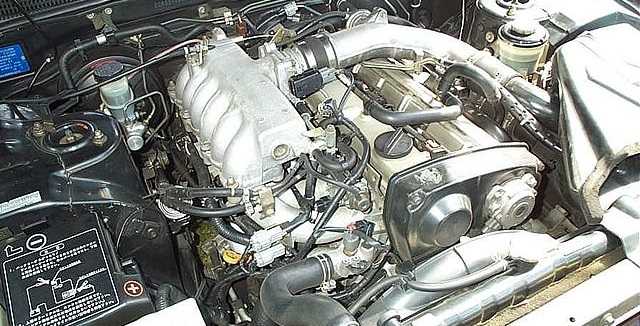 Известнейший и очень популярный представитель серии RB с рабочим объемом 2.5 литра появился в 1991 году, в качестве замены RB20DET. На то время новый RB25DE использовал блок цилиндров похожий на RB20, но с увеличенным диаметром цилиндров до 86 мм, коленвалом, с ходом поршня 71.7 мм, применены другие шатуны и поршни. Головка блока цилиндров двухвальная, 24-х клапанная. Первые модели (до 1993 года) не оснащались системой изменения фаз газораспределения NVCS. Характеристики распредвалов на этих движках: фаза 240/232, подъем 7.8/7.3 мм. Такие RB25DE S1 (Series 1) развивали 180 л.с. при 6000 об/мин. Позже, в 1993 году (с выходом Skyline R33), появилась система NVCS на впускном валу, а выпускной распредвал заменили на 240, подъем 7.8 мм. Мощность таких автомобилей с RB25DE увеличилась до 190 л.с. при 6400 об/мин. С 1995 года была изменена система зажигания, маф, датчик положения распредвала, блок управления двигателем.
Известнейший и очень популярный представитель серии RB с рабочим объемом 2.5 литра появился в 1991 году, в качестве замены RB20DET. На то время новый RB25DE использовал блок цилиндров похожий на RB20, но с увеличенным диаметром цилиндров до 86 мм, коленвалом, с ходом поршня 71.7 мм, применены другие шатуны и поршни. Головка блока цилиндров двухвальная, 24-х клапанная. Первые модели (до 1993 года) не оснащались системой изменения фаз газораспределения NVCS. Характеристики распредвалов на этих движках: фаза 240/232, подъем 7.8/7.3 мм. Такие RB25DE S1 (Series 1) развивали 180 л.с. при 6000 об/мин. Позже, в 1993 году (с выходом Skyline R33), появилась система NVCS на впускном валу, а выпускной распредвал заменили на 240, подъем 7.8 мм. Мощность таких автомобилей с RB25DE увеличилась до 190 л.с. при 6400 об/мин. С 1995 года была изменена система зажигания, маф, датчик положения распредвала, блок управления двигателем.
В 1998 году, на автомобиле Nissan Skyline R34, появилась новая генерация RB25DE NEO. Этот мотор отвечал высоким экологическим стандартам, а также оснащался новым впускным коллектором с тонкими раннерами, доработанной ГБЦ с измененными камерами сгорания, без гидрокомпенсаторов, с новыми распредвалами (фаза 236/232, подъем 8.4/6.9 мм), другим выпускным коллектором. Мощность двигателя RB25DE NEO увеличилась до 200 л.с. при 6400, крутящий момент 231 Нм при 4800 об/мин.
Вместе с атмосферным двигателем производилась и самая известная турбо модификация RB25DET. Первая версия (RB25DET S1) появилась в 1993 году, на автомобиле Nissan Skyline R33 и от обычного RB25DE S1 отличалась шатунами, поршнями под степень сжатия 8.5, наличием турбокомпрессора 45V1 (большего размера, чем на RB20DET), работающего на давлении 0.5 бар. Данная версия оснащалась системой изменения фаз газораспределения на впускном распредвалу NVCS, форсунками 370 cc/min, а в блоке цилиндров установлены масляные форсунки. Мощность такого двигателя равна 245-250 л.с. при 6400 об/мин, крутящий момент 272 Нм при 4800 об/мин.
По аналогии с RB25DE, в 1995 году был проведен рестайлинг, в ходе которого изменилась система зажигания, маф, датчик положения распредвала, блок управления. Турбина заменена на 45V2, где вместо стальной крыльчатки используется пластиковая. Такие двигатели называют RB25DET S2.
В 1998 году, мотор модифицировали и назвали RB25DET NEO. Такие двигатели отвечали повышенным экологическим стандартам и отличались коленвалом, шатунами от RB26DETT, поршнями, увеличенной до 9 степенью сжатия, блоком цилиндров с маслофорсунками и без масляного канала. Еще отличия: впускной коллектор (раздвоенный), доработанная ГБЦ с модифицированными впускными каналами и камерами сгорания, жесткими толкателями вместо гидрокомпенсаторов. На двигателях RB25DET NEO используются распредвалы с фазой 236/232, подъем 8.4/8.7 мм и форсунки 340 cc. На нео моторах используется турбокомпрессор 45V3 с увеличенной горячей частью и пластиковой крыльчаткой, давление наддува увеличено до 0.7 бар. Все эти модификации дали возможность снять 280 л.с. при 6400 об/мин, крутящий момент 334 Нм при 3200 об/мин. Позже, с 2001 года, ставилась турбина 45V4, со стальной крыльчаткой.
Регулировать клапаны на RB25DE/DET не требуется, данные силовые установки оснащаются гидрокомпенсаторами, кроме версий NEO. На RB25DET/DE используется ремень ГРМ, ресурс ремня ГРМ 80-100 тыс. км.
Вместе с RB25DE/DET, в серию RB входили RB20E/ET/DE/DET, RB24S, RB26DETT и RB30S/E/ET.
После снятия RB25 с производства в 2002 году, вместо него стали устанавливать V6 VQ25DE/DET.
Проблемы и недостатки двигателей Ниссан RB25DET/DE
Как и многие легендарные моторы 90-х, серия RB очень надежна, недаром же она одна из самых известных в мире. Эти двигатели не имеют конструкционных просчетов и серьезных проблем. Из более мелких неприятностей можно отметить периодический выход из строя катушек зажигания, что приводит к троению. Меняйте их через 100 тыс. км и все будет в порядке. Также моторы Nissan RB отличаются высоким расходом топлива.
В остальном двигатели RB достаточно надежны и долговечны, если не делать буст ап, регулярно обслуживать и использовать качественное масло и бензин.
Сравнивая RB25DET с 1JZ-GTE, ближайшим конкурентом ниссановского мотора, можно сказать, что конструкция 1JZ немного удачней, да и в целом мотор несколько надежней и больше приспособлен к тюнингу.
Nissan Skyline GT-R R32 — driven by Takeshi Nakazato

Before the R32 burst into Initial D, Takumi’s opposition had only been lightweight, low-powered RWD cars.
So then, the introduction of Godzilla itself is a seismic one. Serving as Takumi’s introduction to all-wheel-drive racers, NightKids leader Nakazato’s R32 is one of the most menacing in the whole series.
It’s not heavily tuned, though upgrades a Nismo front bumper, Work Meister alloys and a custom exhaust.
On a mission to prove drifting is for show and not for speed, Nakazato challenges Takumi to a battle on Akina. Despite holding the lead for much of their race, his R32’s tyres eventually give way, allowing Takumi and the ‘86 an easy passage through to win.
Nissan Silvia K’s
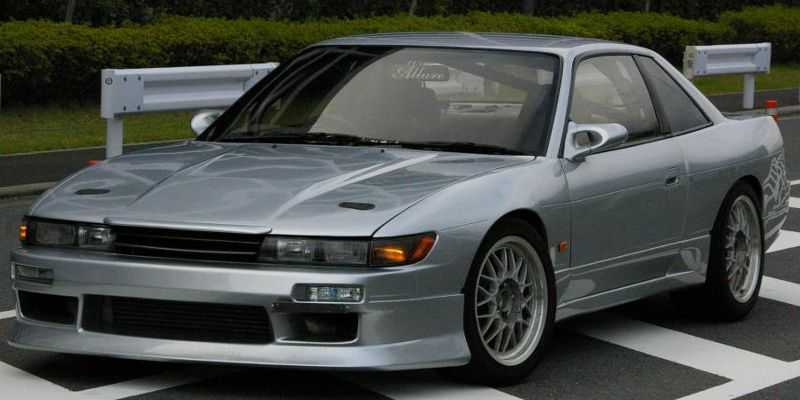
The Nissan Silvia is the car driven by Koichiro Iketani in Initial D, humble gas station worker by day and leader of the Speed Stars racing team by night, this car model holds the record as one of Nissan’s longest running line of sports coupe. The term Silvia is actually a reference to the genus name of a class of bluebirds. That, in turn, is a reference to another Nissan model: the Nissan Bluebird. The model shown in the series is an S13 which comes in two flavors, coupe and convertible. The S13 was responsible for introducing one of the first uses of Nissan’s multi-link rear suspension along with a four wheel steering system.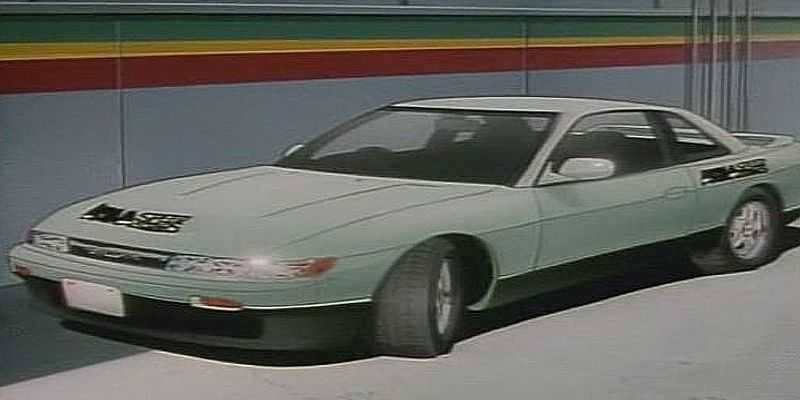
Mercedes-Benz 190E
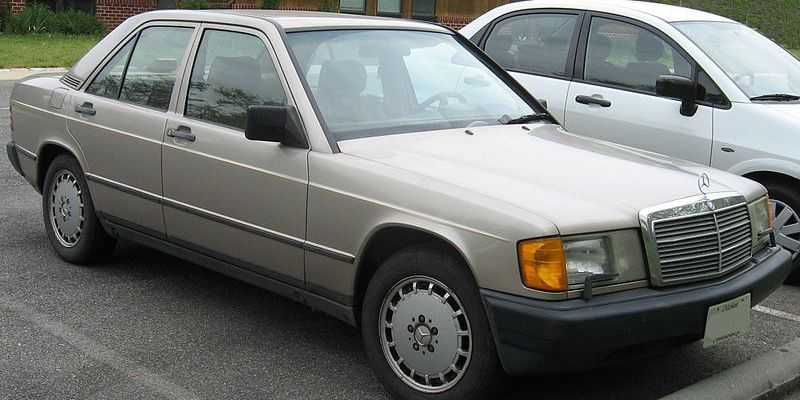
Although not exactly a racing vehicle, it’s hard not to describe this car as pretty awesome. During the Initial D manga, this high class ride is driven by the mysterious sugar daddy known only as Natsuki’s papa. The 190E model was the result of six hundred million English pounds worth of research of development. One of the best end results made this particular model more powerful and more fuel efficient than other models of its line, thanks to its Bosch Jetronic multi-point fuel injection system. In the anime he drives the Mercedes-Benz E300. Lastly, this is also the only car in the series that is manufactured outside Japan.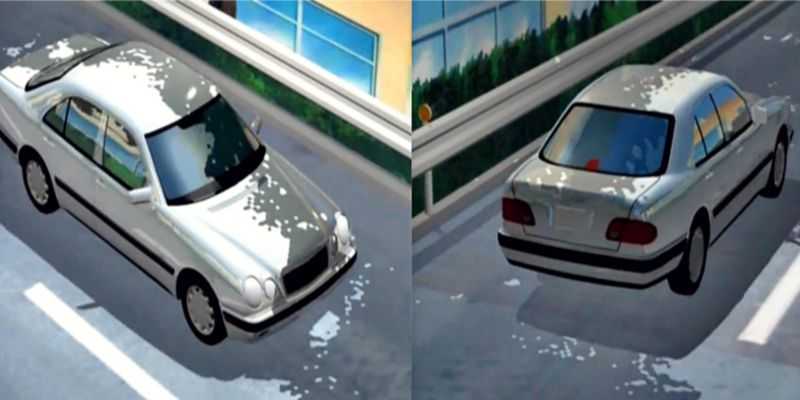
Nissan Skyline GT-R V-spec II Nür
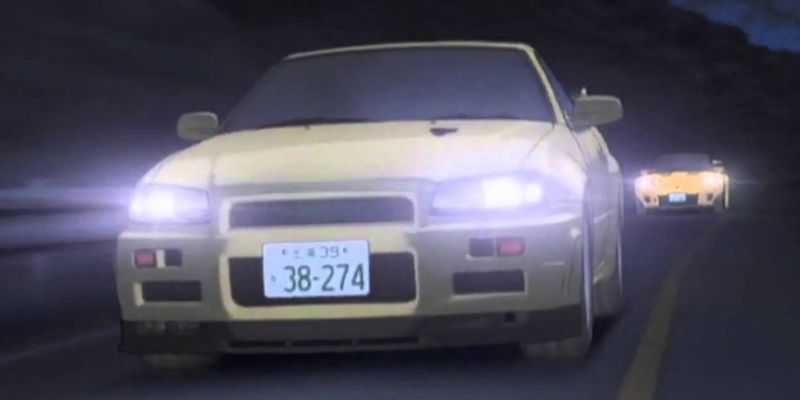
The Nissan Skyline GT-R V-spec, Victory specification, was a follow up model to celebrate the success of the GT-R. For the V-spec, Nissan added Brembo brakes and a re-tuned ATTESA E-Ts S system. The ATTESA, or Advanced Total Traction Engineering System for All-Terrain, was introduced with the Nissan Bluebird and is basically responsible for the four-wheeled drive in some models produced by Nissas. They also included 17″ BBS wheels with 225/45/17 tires. The V-spec II didn’t add much of a difference other than a larger set of wheels. In the series, this model is driven by Kozo Hoshino, who is one of the top two racers of a racing group for middle aged racers called the Purple Shadow.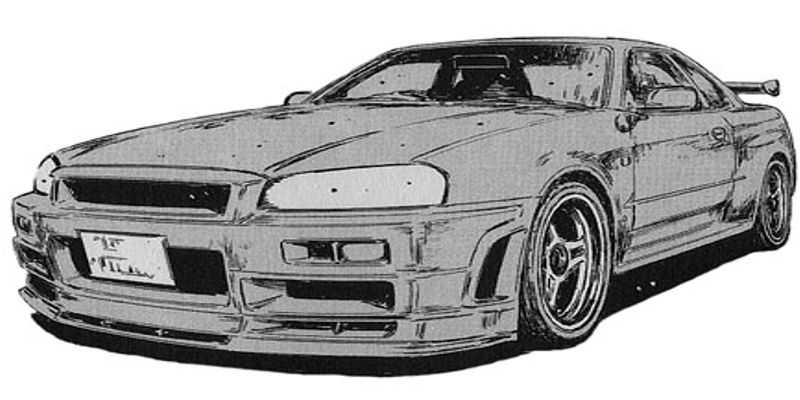
Mitsubishi Lancer Evolution III — driven by Kyoichi Sudo
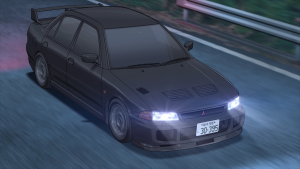
Mitsubishi Evos are a common sight in Initial D, but our first experience comes in Second Stage — with team Emperor’s leader Sudo and his Evo III.
Following another Emperor driver’s defeat to Takumi (Seji and his Evo IV, shout-out for him cutting up the stickers of teams he’s beaten and putting them on his car’s spoiler), Sudo brings out his big guns to put the AE86 in its place.
Upgrades include include an anti-lag system, a boost controller and an improved turbine housing for the turbocharger.
Sudo does manage to beat Takumi — a rare feat — though only because of his ‘86s engine blowing up. They do have a rematch, with Takumi driving the reworked Trueno and winning a tight battle.
Описание
Этот мотор серии RB25DE имеет увеличенный ход поршня, а используемый чугунный блок цилиндров представляет собой расточенную версию двухлитрового мотора RB20.
Особенностью этого двигателя является 24-х клапанная система и двухвальная головка блока цилиндров, что позволяет уменьшить инерцию и вибрацию работающего мотора.
Изначально RB25DE не имел системы изменения фаз газораспределения и развивал мощность в 180 лошадиных сил. В последующем мотор RB25DE получил измененный, в сравнении с версией RB20, распредвал и систему управления газораспределением NVCS. Это позволило поднять мощность до отметки в 190 лошадиных сил. Отличные технические характеристики этого мотора сочетаются с его топливной экономичностью.
- В 1993 году появилась турбированная модификация. Двигатель RB25DET использовал мощную турбину, которая работала с давлением в 0,5 бар. Аналогичная турбина устанавливается и на RB20DET. В зависимости от конкретных настроек этот мотор развивал мощность в 240-250 лошадиных сил.
- Одной из технических новинок турбированного 2,5 литрового мотора RB25DET стали масляные форсунки, установленные непосредственно в блоке цилиндров. Использование данной технологии позволило обеспечить качественную смазку RB25DET даже в условиях существенных нагрузок. Эта версия мотора использовала модернизированную версию системы газораспределения, что в свою очередь позволяло оптимальным образом реализовывать динамические показатели двигателя.
- В 1995 году версия турбомотора RB25DET претерпела значительные изменения. Так, например, была изменена система зажигания, установлен новый блок управления работой двигателя, и появился датчик положения распредвала. Полностью изменилась турбина, в которой вместо недолговечной стальной крыльчатки появилась пластиковая модификация, которая сочетала надежность и простоту в ремонте. Отметим, что в последующих модификациях мотора RB25DET стала использоваться турбина со стальной крыльчаткой.
- Мощность рестайлингового турбированного мотора RB25DET составила в зависимости от конкретного автомобиля 260-280 лошадиных сил. Этот мотор управлялся электроникой, и в зависимости от настроек блока управления мощностью силовой установки можно было изменять практически без потери надежность двигателя.
- Отдельные модификации мотора RB25DE позволяли получать более 300 лошадиных сил и использовались на спортивных модификациях Nissan Skyline R34.
- В 1998 году появилась модификация этого мотора, получившая индекс RB25DET NEO. Этот двигатель отвечал строгим экологическим нормам и оснащался усиленными шатунами и коленвалом, способным выдержать максимальные нагрузки.
- Степень сжатия двигателя была увеличена до 9,0, что положительно сказалось на показателях динамичности автомобилей. RB25DET NEO использует новый блок цилиндров, отлитый из специально сплава, устойчивого к воздействию высоких температур и отличающегося легким весом.
- Также отметим изменившуюся конструкцию камер сгорания и модернизированную систему смазки. Вместо гидрокомпенсаторов на моторе RB25DE стали использоваться жесткие толкатели, которые обеспечивают прочность и надежность двигателя. Стандартная модификация этого турбомотора развивает мощность в 280 лошадиных сил.
- Для упрощения конструкции двигателей серии RB25DET все они оснащались ременным приводом, который имеет ресурс порядка 100 тысяч километров. В соответствии с сервисными рекомендациями автопроизводителя рекомендуется менять ремень ГРМ и все ролики с направляющими каждые 80-90 тысяч километров.
Subaru Impreza — driven by Bunta Fujiwara
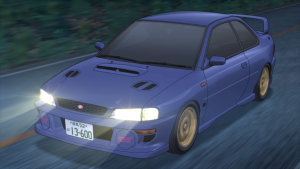
The top honour goes to the choice of Bunta Fujiwara, Takumi’s dad, namesake of the tofu shop, and arguably the coolest character in the whole series.
If you haven’t seen Initial D before, the AE86 is actually owned by Bunta. Once Takumi gets serious about his downhill racing and takes the ‘hachiroku’ effectively as his own, old man Fujiwara decides to find himself a new set of wheels.
He finds himself with the keys to a Subaru Impreza WRX STI Type R for a test drive, and ends up in an impromptu race against his own son on Mount Akina. Without Takumi realising who was behind the wheel, he eventually loses to the Impreza — sealing Bunta’s decision to buy it.
Unlike most cars used in Initial D, the Impreza remains practically stock — with the exception of a custom exhaust. It pinches top spot from the Trueno AE86 in our eyes, and clearly in Takumi’s too, as he borrows it for a few dates in the series…
Information and photography credits
We thank the following entities for the use of their information and photography in this article:
- Wikipedia
- Usagi and RB320Impreza on Car Throttle
- Banpei
- Initial D Wiki
- Toyota UK
- Wikimedia Commons
Thank you for reading our Initial D Cars guide.
If you enjoyed this article, then please share it with the sharing buttons at the side and the bottom of your screen.
Written by Joe Terrell
Joe is an avid writer and car enthusiast. When he’s not cruising the streets alongside his friends in his Nissan Silvia S15, he’s drifting on his VR racing simulator.
Joe’s passion for cars is always on display. With a keen eye for detail and a deep understanding of the automotive industry, he hopes his writing conveys his excitement and knowledge of cars and games.
Joe’s work has been featured on many platforms including drivetribe.com, smartdrivinggames.com, carthrottle.com, databox.com and ceoblognation.com.
When he’s not behind the wheel or at his keyboard, he’s likely daydreaming of his ultimate ride — the legendary Lexus LFA.
What is the Car in Initial D?
Those of you that have a keen interest in JDM cars will undoubtedly know that the lead car in Initial D, driven by Takumi, is the legendary Toyota AE86.
Also known as the Hachi-Roku (Japanese for Eight-Six), Toyota initially launched this small, humble lightweight coupe in 1983 as part of the fifth-generation of the Corolla family.
It was, of course, rear-wheel drive, and featured the high-revving 1600cc 4A-GE engine under the hood. It may have only had 128 HP, but Takumi knew how to use every part of this to his advantage.
When part of Project D, from Stage 2 onwards, Takumi would receive engine upgrades, which enabled him to achieve a far more respectable 240 HP by using a TRD Group A 4A-GELU engine.
Here are the specs of Takumi’s AE86 throughout the various stages of its life:
Specs (Stock)
- Engine Name: 4A-GEU
- Engine Type: L4 DOHC
- Power: 128 HP / 7,200 rpm
- Torque: 105 ft/lb torque at 5,200 rpm
- Displacement: 1587cc
- Drivetrain: FR
- Aspiration: NA
- Length: 4205 mm
- Height: 1335 mm
- Width: 1625 mm
- Weight: Under 1000 kg
- Transmission: 5-speed MT
Specs (Fujiwara Tofu Shop Upgrade)
- Engine Name: 4A-GE
- Engine Type: L4 DOHC
- Power: 150 HP / 7,500 rpm
- Displacement: 1587cc
- Drivetrain: FR
- Aspiration: NA
- Length: 4205 mm
- Height: 1335 mm
- Width: 1625 mm
- Weight: Under 1000 kg
- Transmission: 5-speed MT
Specs (Project D Upgrade)
- Engine Name: TRD Group A 4A-GELU
- Engine Type: L4 DOHC
- Power: 240 HP / 11,000 rpm
- Displacement: 1587cc
- Drivetrain: FR
- Aspiration: NA
- Length: 4205 mm
- Height: 1335 mm
- Width: 1625 mm
- Weight: 880 kg
- Transmission: 5-speed MT
We’ve listed some of the best AE86 builds ever featured on Drifted in our 7 Best AE86 Corolla drift builds to blow your mind guide.
If you’re keen to know everything there is to know about Drift King Keiichi Tsuchiya’s AE86, then we’ve also got you covered!
Every car featured in Initial D
Honda
Honda Civic EG6 — driven by Shingo Shoji
Honda Civic Type R (EK9)
Honda Civic Type R EK9 — driven by Daiki Ninomiya
Spoon Sports Honda Civic Type R EK9 — owned by Todo School
Honda Integra — driven by Smiley Sakai
Honda NSX — driven by Go Hojo
Honda S2000 — driven by Dr. Toshiya Joshima
Mazda
Eunos Roadster — driven by Toru Suetsugu
Mazda Roadster — driven by Satoshi Omiya
Mazda RX-7 FC — driven by Ryosuke Takahashi
Mazda RX-7 FD — driven by Keisuke Takahashi
Mercedes
Mercedes-Benz E-Class W210 — driven by Papa
Mitsubishi
Mitsubishi Lancer Evolution III GSR — driven by Kyoichi Sudo
Mitsubishi Lancer Evolution IV RS — driven by Seiji Iwaki
Mitsubishi Lancer Evolution V RS — driven by Aikawa
Mitsubishi Lancer Evolution VI GSR Tommi Makinen Edition — driven by Ichijo
Mitsubishi Lancer Evolution VII GSR — driven by Kobayakawa
Nissan
Nissan 180SX — driven by Kenji
Nissan 180SX — driven by Tsukamoto
Nissan Fairlady Z Z33 — driven by Ryuji Ikeda
Nissan SilEighty — driven by Mako Sato
Nissan Silvia S13 — driven by Koichiro Iketani
Nissan Silvia Q’s S14 — driven by Kenta Nakamura
Nissan Silvia Spec-R S15 — driven by The Two Guys From Tokyo
Nissan Silvia Spec-R S15 — driven by Hiroya Okuyama
Nissan Skyline 25GT Turbo ER34 — driven by Atsuro Kawai
Nissan Skyline GT-R R32 — driven by Takeshi Nakazato
Nissan Skyline GT-R R32 — driven by Rin Hojo
Nissan Skyline GT-R R34 — driven by Kozo Hoshino
Subaru
Subaru Impreza WRX STI Coupe Type R Version V — driven by Bunta Fujiwara
Suzuki
Suzuki Cappucino — driven by Sakamoto
Toyota
Toyota Sprinter Trueno AE86 (3 door) — driven by Takumi Fujiwara
Toyota Sprinter Trueno AE86 (2 door) — driven by Shinji Inui
Toyota Corolla Levin AE86 — driven by Wataru Akiyama
Toyota Corolla Levin AE85 — driven by Itsuki Takeuchi
Toyota Altezza RS200 — driven by Nobuhiko Akiyama
Toyota Celica GT-Four ST205 — driven by Miki
Toyota MR2 SW20 — driven by Ken Kogashiwa
Toyota MR-S — driven by Kai Kogashiwa
Toyota Supra A80 — driven by Hideo Minagawa
Неисправности
| НЕИСПРАВНОСТЬ | ПРИЧИНА И РЕМОНТ |
|---|---|
| Потеря мощности. | Зачастую причиной потери мощности является вышедшая из строя турбина, крыльчатка которой износилась и требует ремонта. В данном случае ремонт заключается в диагностике проблемы и замены как всей турбины, так и ее отдельных элементов. |
| Холостой ход начинает плавать, а автомобиль плохо заводится. | Данная проблема характерна в большей степени для модификации RB25DET NEO, которая не имеет гидрокомпенсаторов, поэтому раз в 50 тысяч километров мотору требуется механическая регулировка зазора клапанов. Также неровная работа двигателя может быть вызвана неполадками со свечами и катушками зажигания. |
| Недостаточное давление в системе смазки двигателя RB25DE. | На приборной панели появляется соответствующий индикатор недостаточного давления масла, но при этом уровень масла находится в норме. Причиной подобного может быть вышедшая из строя масляная форсунка. Такие форсунки неремонтопригодны и требуют замены. |
Тюнинг двигателя Nissan RB25DET
RB25DET Буст ап
Стоит сразу выкинуть из головы тюнинг RB25DE или турбирование RB25DE, куда проще, быстрее, надежней и дешевле купить контрактный RB25DET и получить высокую мощность сразу.
Предел сток турбин на RB25DET 0.8-0.9 бар, дальше идти нет смысла. На 0.9 бар, с 76 мм выхлопом, передним интеркулером от GTR, Apexi power intake, MAF Z32, буст контроллером, новыми свечами, помпой и маслонасосом от GTR N1, масляным кулером, насосом Walbro 255 lph, Apexi Power FC (или с другим мозгом), вы получите около 300 л.с. на колесах. Это позволит ехать 1/4 мили за средние 13 сек. Этого всем мало, поэтому идем дальше.
А дальше нужно заменить сток турбо на HKS GT2835, купить форсунки 550 cc, топливный регулятор, катушки Splitfire, 3-х слойный радиатор. Затем дуете 1 бар и снимаете около 340 л.с. на колесах, на 1.5 бар получите около 400 л.с. Больше мощности можно получить на турбине GT3540, с распредвалами 256/256 и форсунками 750 сс, это даст шанс получить мощность на колесах около 400 л.с. на 1 баре наддува. С такой турбиной можно ехать четверть мили за высокие 11 сек. В сток поршневую можно надуть и 500 л.с., а с метанолом и больше, но лучше купить шатуны GTR, кованые поршни, стальную прокладку ГБЦ, ARP шпильки, сделать портинг и тогда уже дуть 500+ л.с.
Помимо буст апа и установки турбин на RB25DET периодически практикуется установка ГБЦ RB26DETT. Также имеются варианты со строкер китом (поршни большего диаметра с длинноходным коленвалом) до 2.8-2.9 литров либо до 2.6, путем установки коленвала и поршней RB26DETT плюс 1.2 мм прокладки ГБЦ. Все это уже дорого, сложно и не нужно. В таких случаях продайте свой RB25DET и купите двигатель RB26DETT.
РЕЙТИНГ ДВИГАТЕЛЯ: 5-
Honda Civic EG6 — driven by Shingo Shoji
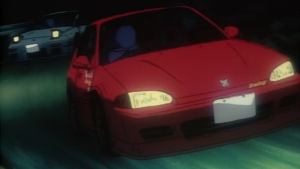
Directly after Nakazato’s defeat to Takumi, NightKids driver Shingo Shoji decides he needs to beat Takumi to prove himself as the best driver in the street racing team.
His EG6 Civic may seem like a step down, but some serious modifications are made — including a new ECU, a new exhaust manifold, an increased compression ratio and a lightweight flywheel.
Not content with any normal race, Shoji challenges Fujiwara to a ‘duct tape deathmatch’ — requiring them to control the car with just one hand, duct taped to the steering wheel. Outpaced early on by the AE86, Shoji tries to get dirty — but his attempt a wreck ends up with putting himself into a guardrail.
Racers, Start Your Engines!
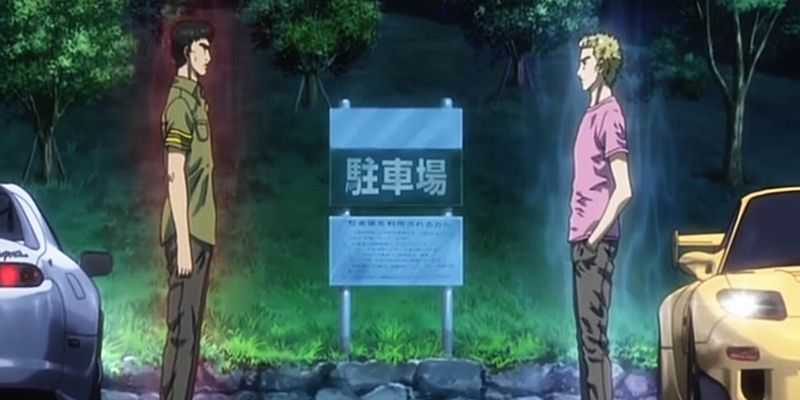
Where the big time movies were seemingly made by a roster of car enthusiasts, Initial D was made more by and for car experts. Not only do you get to see those heart pounding races you tuned in for, but you also get immersed in a pretty interesting racing culture. The real gem of the series isn’t the cool races. That’s mainly because, while unquestionably cool, their fairly common. What isn’t so common However, is the sheer amount of thought that goes into these races. Weight, height, transmissions, tires, model, custom parts. They all play a factor during each and every race. Initial D isn’t just a layout of really awesome cars. Each car is carefully chosen and specifically paired with a fitting driver. When you dive into the histories and capabilities of these vehicles, it becomes clear that the audience isn’t going to be treated to one fast cars with different looks. In Initial D, cars matter. Car lovers, especially car historians, are in for a real treat when watching this series. But you don’t have to be a car expert to enjoy the beautiful marvels of machinery on display here. So sit back and enjoy the twenty-two sweetest rides from Initial D.
First, here’s a little something to get you in the mood.https://www.youtube.com/watch?v=926SVUFeJ94
Latest articles
-
Nissan’s 350z is the JDM performance car of this decade and to celebrate we have assembled all the information you will ever need to know on the mighty Z33.
-
Looking for a performance G37 exhaust? You’ve come to the right place. We compare nine of the best G37 exhausts available to help you find your perfect system.
-
We deep dive into everything you need to know about Forza Horizon 5 Houses. Learn why all the houses in Forza Horizon 5 are essential and how to unlock them.
-
We present fifteen of the best JDM cars of the nineties and check out the latest news on their upcoming state-of-the-art successors.
-
This year marks what would have been deceased action hero Paul Walker’s 50th year and to honour that we have assembled 43 of his most memorable quotes.
-
Eager to upset your rivals by getting the fastest car in Forza Horizon 4? We’ve got you covered! This guide covers the 22 fastest cars you’ll find in the game.
-
Looking to turn your Nissan 370Z into a boosted street or track weapon? Not sure about picking the right brand or products? Our 370z supercharger guide has got you covered!
-
As Playground Games takes drifting to the next level, we bring you the best drift car Forza Horizon 5 guide to find the ultimate drift car in the game.
-
Looking for the best 240SX coilovers on the market for your pride and joy? Join us in our ultimate 240SX coilover guide and explore the best kits on sale.
-
Looking to throw down your Miata at the track, carve up the canyons or find the perfect stance? We compare the best suspension kits on the market in our ultimate Miata coilover guide.
-
Are you considering purchasing a Nissan 350Z? Make sure you check out this guide before handing over your hard-earned cash.
-
We present seventeen of the best drift cars for beginners. From BMW to Toyota, we’ll find you the perfect platform to get started on your drifting adventure.
-
Mazda’s 13B engine is one of the most sensational engines ever created. In this guide, we’ll be exploring everything you need to know about the JDM legend.
-
The 2UZ-FE doesn’t get as much attention as the 1UZ-FE, leaving this hugely underrated high-torque powerplant a tempting proposition for petrolheads.
-
Depreciation becomes your new best friend when it comes to picking up a performance car bargain. We’re checking out our favorite fast cars under $20k.
-
We show you exactly how to modify your SR20 to boost power and enhance reliability in our step-by-step SR20DET tuning guide.
Mazda RX-7 FC — driven by Ryosuke Takahashi
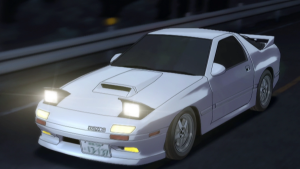
That honour goes to his brother Ryosuke and his FC.
Reflecting its driver’s personality, this RX-7 remains pretty subdued at the start with only subtle modifications made — though expertly piloted by RedSuns leader Takahashi.
This suffices for Ryosuke’s mission statement of the RedSuns setting records on every course in the Kanto Plain region, that is until he meets Takumi Fujiwara. After a sensational battle, Ryosuke is beaten and decides to retire from racing and instead watch from the sidelines.
He does eventually overhaul his FC for Project D, do uses the bewinged RX-7 to sight out courses ahead of the team’s races, and one final, emotional race against Rin Hojo.
Toyota Celica GT-Four
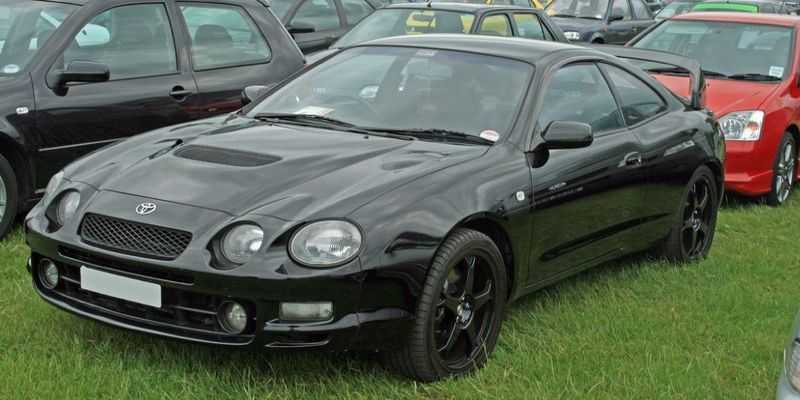
The big selling point of the Celica GT-Four is it’s turbocharged 3S-GTE engine, making it a high performance racing beast. Maybe one of the more interesting things about this model is its origin. It was originally created for the World Rally Championship. Unfortunately, it didn’t win on its debut year. However, things would stay down for this baby for long. The following year it managed to pull out a win during the 1989 WRC Australia. The ST205 variation is the one you get to see in Initial D, driven by Miki, they guy who dresses like he’s always pulling overtime to get accepted into douche-bag academy.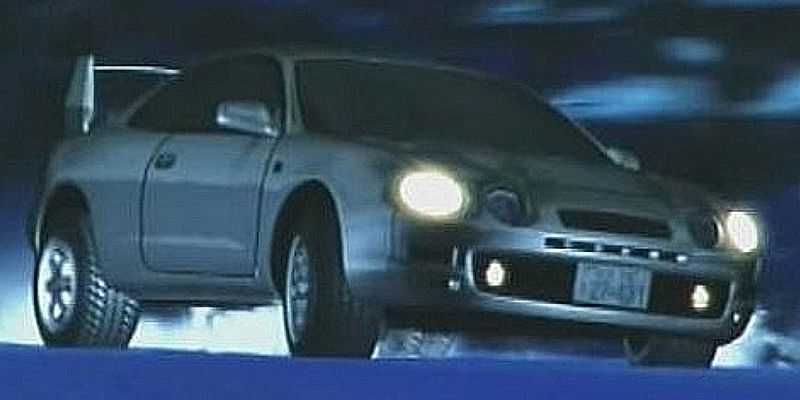
Nissan Skyline 8 (R32) GTS25t Type M 250 л.с.
| Технические характеристики | |
|---|---|
| Цена | € |
| Производство | 1993-1998 |
| Тип кузова | |
| Количество мест | |
| Коробка передач | 5 с. — |
| Топливо | |
| Максимальная скорость | — км/ч |
| Время разгона 0 — 100 км/ч | — сек. |
| Расход топлива в городе | Л/100 км |
| Расход топлива на шоссе | Л/100 км |
| Расход смешанный цикл | Л/100 км |
| Энергетический класс | |
| Привод |
| Двигатель внутреннего сгорания | |
|---|---|
| Приводной двигатель | |
| Объем двигателя | 2498 см3 |
| Выбросы CO2 | гр. |
| Мощность | 250 л.с. / кВт |
| -об./мин. | 6400 |
| Крутящий момент | 294.0 Нм |
| -об./мин. | 6400 |
| Турбо | |
| Система питания | |
| Газораспределительный механизм | |
| Количество цилиндров | 6, |
| Количество клапанов на цилиндр | 4 |
| Диаметр цилиндра | 86.00 мм |
| Ход поршня | 71.70 мм |
| Степень сжатия | 9.00 |
| Катализатор |
| Электродвигатель | |
|---|---|
| Тип электродвигатель | |
| Мощность | kW / л.с. |
| Крутящий момент | Nm |
| Количество двигателей | |
| Тип аккумулятора | |
| Емкость аккумулятора | kWh |
| Напряжение аккумуляторной | V |
| Зарядка аккумулятора |
| Тормозная система | |
|---|---|
| Передние тормоза | |
| Задние тормоза | |
| АБС | |
| EBD | |
| Ассистент торможения |
| Кузовного | |
|---|---|
| Длина | 4720 мм |
| Ширина | 1720 мм |
| Высота | 1360 мм |
| Снаряженная масса автомобиля | 1380 кг. |
| Максимальная нагрузка | -1380 кг. |
| Снаряженная масса + груз | кг. |
| Максимальный вес на крыше | кг. |
| Объем багажника минимальный | Л |
| Объем багажника максимальный | Л |
| Колесная база | 2720 мм |
| Колея передняя | 1480 мм |
| Колея задняя | 1470 мм |
| Диаметр разворота | м. |
| Основные данные | |
|---|---|
| Размер шин | 205/55 R16 |
| Объем топливного бака | 65 Л |
| Блокировка дифференциала | |
| ESP | |
| TC | |
| об./мин. 120 км/ч |
| Подвеска | |
|---|---|
| Тип передней подвески | , |
| Тип задней подвески | , |
| Передний стабилизатор | |
| Задний стабилизатор |
| Соотношение скоростей | |
|---|---|
| 1-й скорости | — |
| 2-я скорость | — |
| 3-я скорость | — |
| 4-я скорость | — |
| 5-я скорость | — |
| 6-я скорость | |
| 7-я скорость | |
| 8-я скорость | |
| 9-я скорость | |
| Коэффициент передачи заднего хода | — |
| Бортовая передача |
Top Brands:
Alfa Romeo |
Audi |
BMW |
Cadillac |
Chevrolet |
Citroen |
Dacia |
Daewoo |
Ferrari |
Fiat |
Ford |
Honda |
Hyundai |
Infiniti |
Jaguar |
Jeep |
Kia |
Lamborghini |
Lancia |
Land Rover |
Lexus |
Maserati |
Mazda |
Mercedes |
Mini |
Mitsubishi |
Nissan |
Opel |
Peugeot |
Porsche |
Renault |
Rover |
Saab |
Seat |
Skoda |
Subaru |
Suzuki |
Toyota |
Volkswagen |
Volvo |
Other Modifications:
Nissan Skyline 8 (R32) 1.8 91 ксNissan Skyline 8 (R32) 1.8 91 ксNissan Skyline 8 (R32) 2.0 125 ксNissan Skyline 8 (R32) 2.0 125 ксNissan Skyline 8 (R32) 2.0 i R6 24V 155 ксNissan Skyline 8 (R32) 2.5 180 ксNissan Skyline 8 (R32) 2.5 180 ксNissan Skyline 8 (R32) 2.6 i R6 24V Turbo 4WD 220 ксNissan Skyline 8 (R32) Autech GTS-4 220 ксNissan Skyline 8 (R32) GT-R 280 ксNissan Skyline 8 (R32) GT-R Spec V 280 ксNissan Skyline 8 (R32) GTS 130 ксNissan Skyline 8 (R32) GTS Auto 130 ксNissan Skyline 8 (R32) GTS-4 Auto 215 ксNissan Skyline 8 (R32) GTS-4 Coupe 215 ксNissan Skyline 8 (R32) GTS-4 Coupe Auto 215 ксNissan Skyline 8 (R32) GTS-t Coupe 215 ксNissan Skyline 8 (R32) GTS25 190 ксNissan Skyline 8 (R32) GTS25 Coupe 190 ксNissan Skyline 8 (R32) GTS25 Coupe Auto 190 ксNissan Skyline 8 (R32) GTS25t Coupe Type M 250 ксNissan Skyline 8 (R32) GTS25t Coupe Type M Auto 245 ксNissan Skyline 8 (R32) GTS25t Type M 250 ксNissan Skyline 8 (R32) GTS25t Type M Auto 245 кс
Сравните с другим автомобилем
Поделиться Поделиться Сообщение об ошибке




























